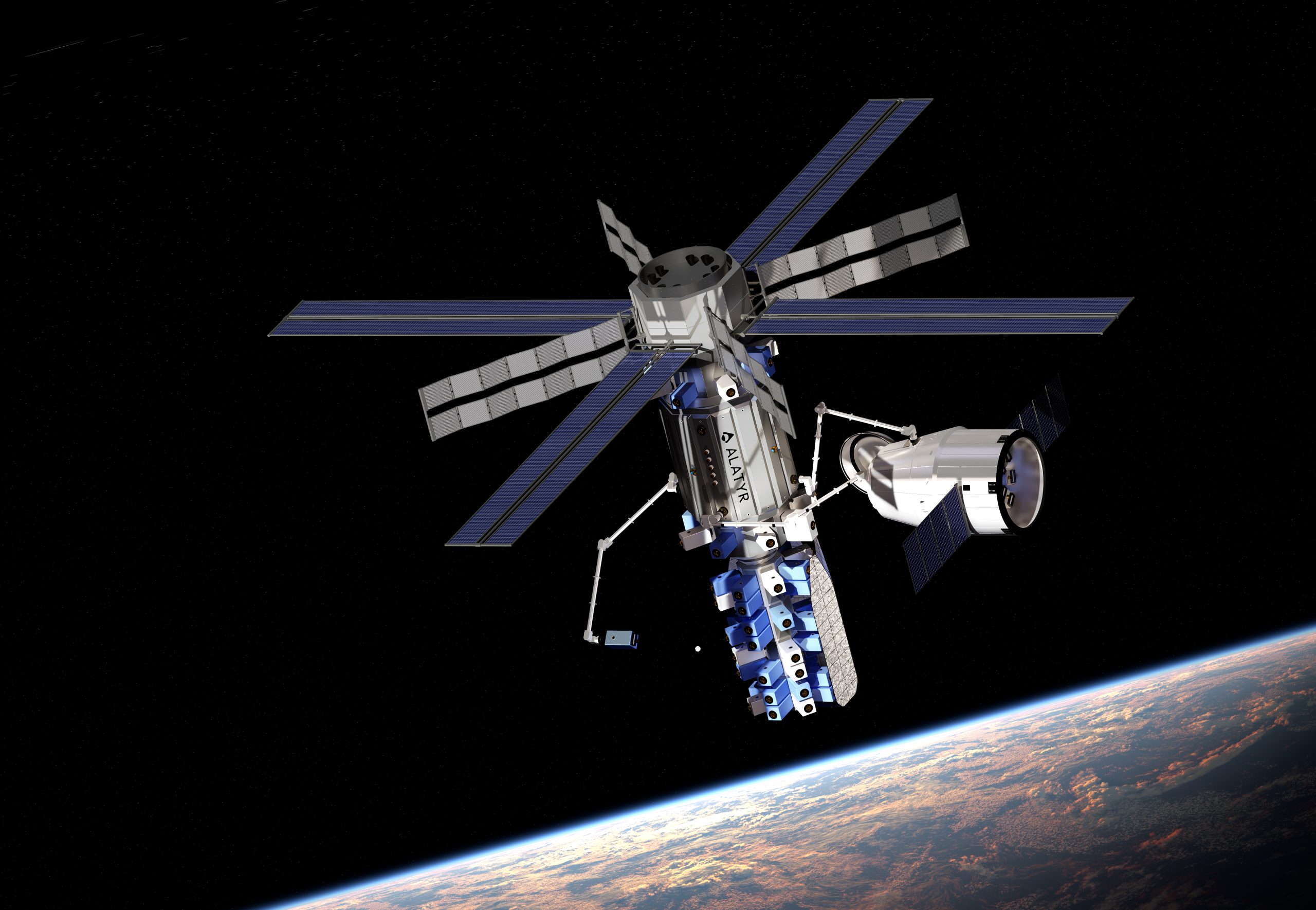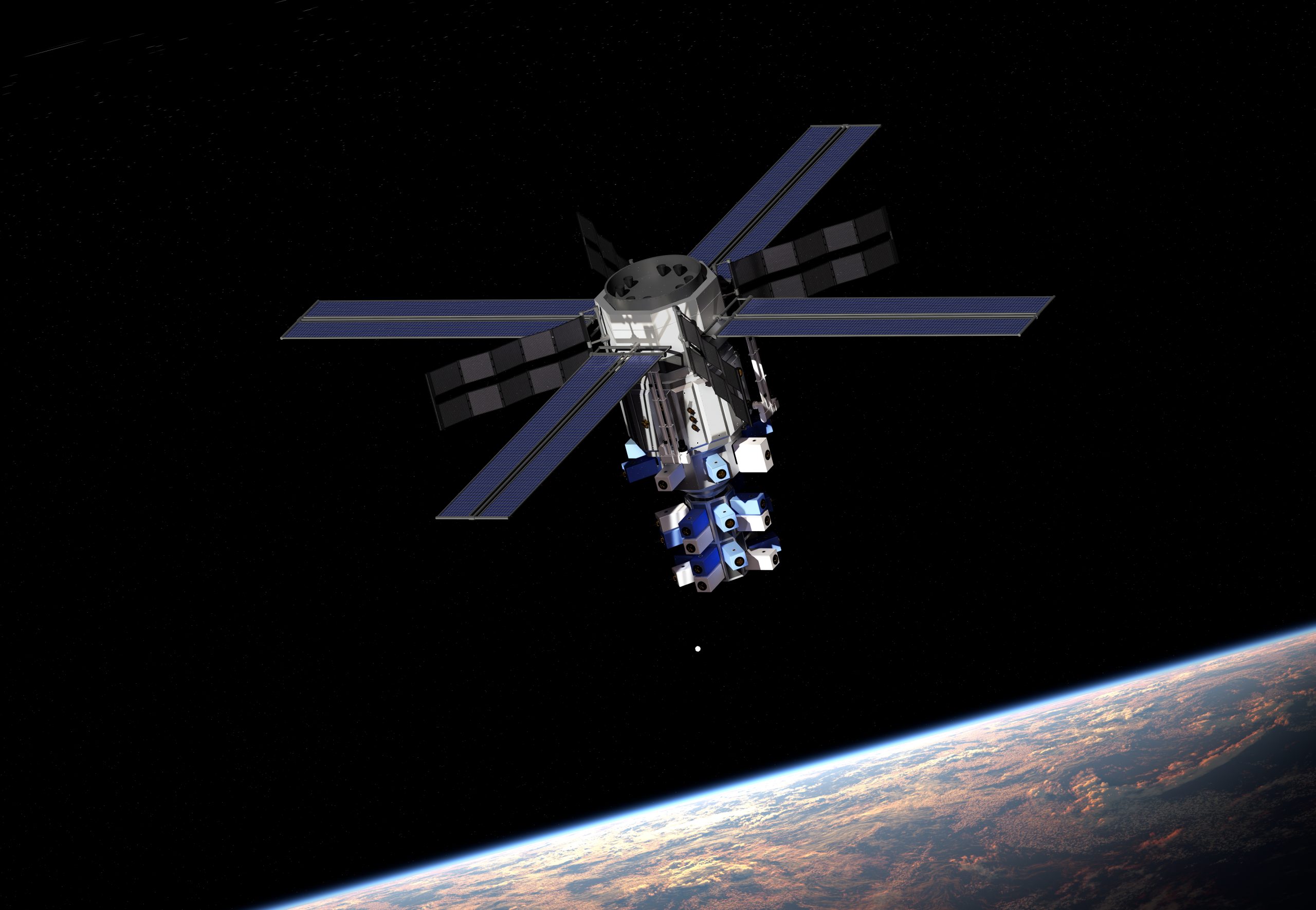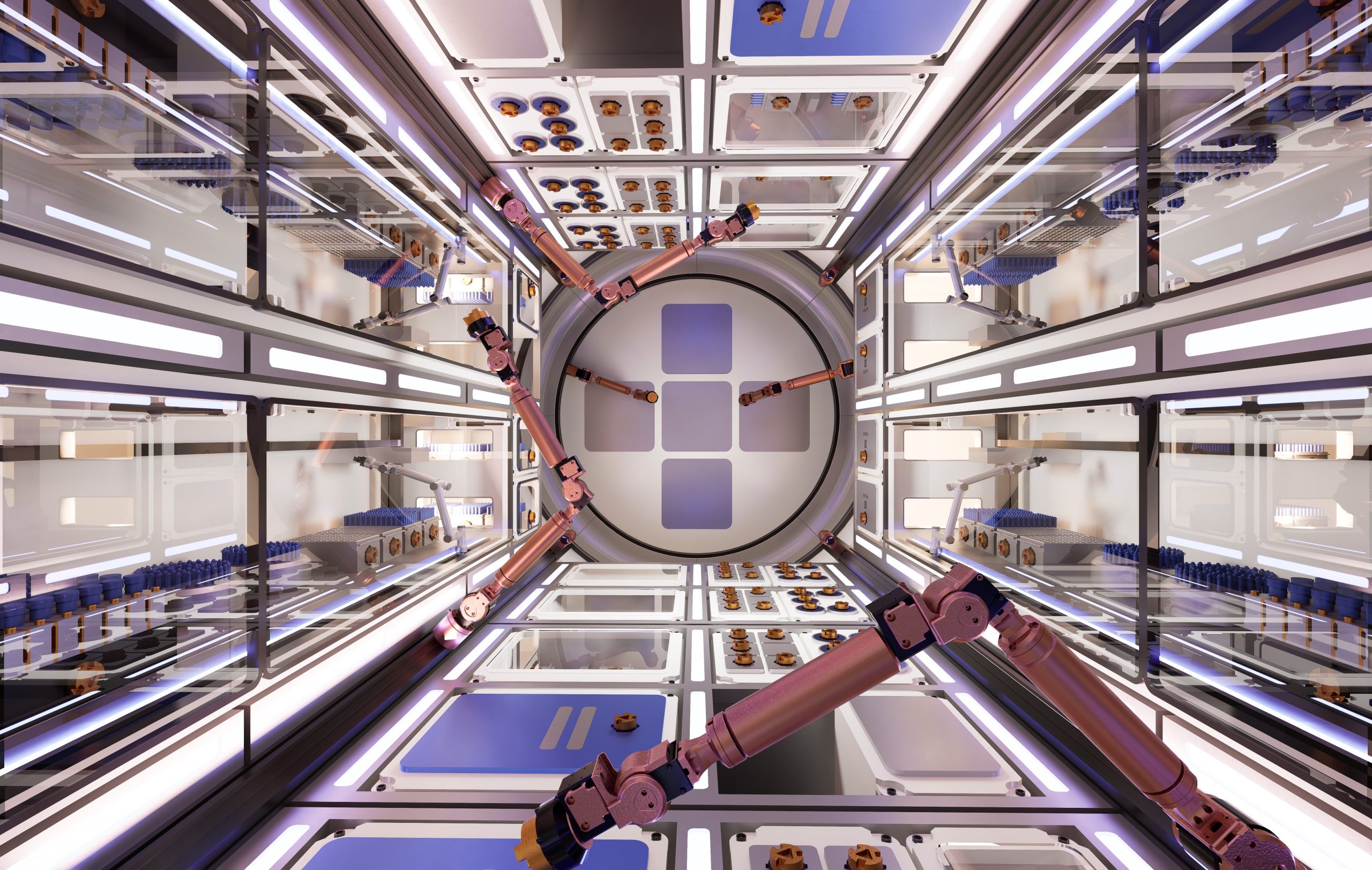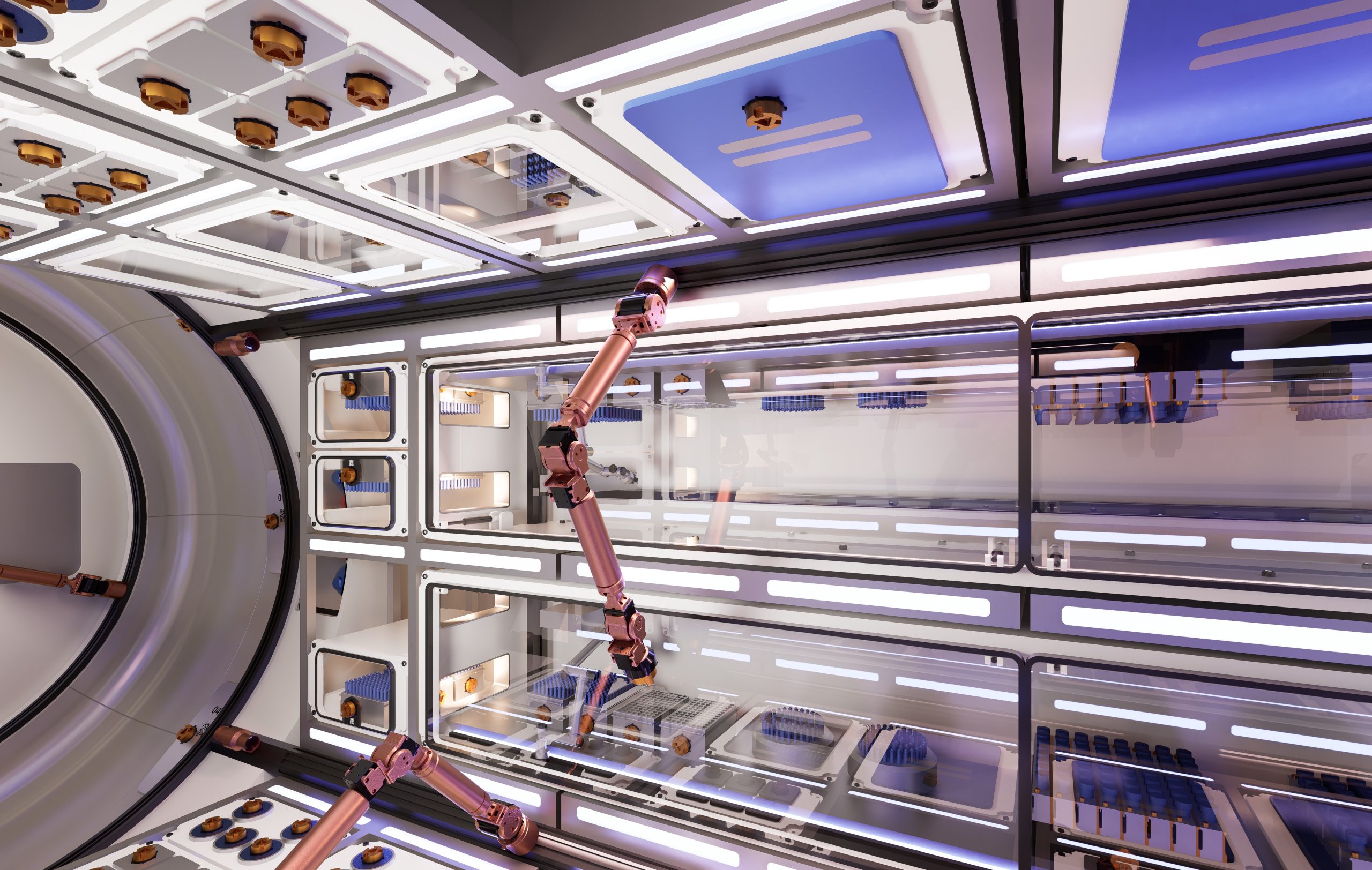
Alatyr Station
Space Station
Typology: Space Architecture
Client: Alatyr
Size: Confidential
Status: Under Development
The Alatyr Space Station is designed with a flexible, modular architecture, allowing for two distinct variants that share the same core diameter while differing in length and capacity. This modular approach enables the station to adapt to different mission needs while maintaining efficiency, scalability, and compatibility across variants.
Shared Design Features:
Both variants of the Alatyr Space Station retain the same fundamental structure, pressurized laboratory module, automated systems, and operational workflows. Regardless of size, they feature:
A fully automated in-orbit laboratory for bioproduction, tissue engineering, and material research.
Robotic payload management systems to handle deliveries, storage, and retrieval.
Integrated service modules housing power, communications, propulsion, and environmental control.
Microgravity-optimized laboratory zones maintaining the same process flow, though with adjusted capacities in the smaller variant.
Designed for self-sustainability and efficiency, the station operates with onboard energy systems powered by solar arrays, recycling technologies to minimize consumable usage, and automated sanitization processes supported by predictive maintenance through a digital twin. The station’s modular architecture allows for future expansion, enabling the addition of new functional modules to meet evolving research and industrial needs. Its compatibility with commercial cargo vehicles ensures low-cost resupply and operational flexibility.
Applications of the Alatyr Space Station span numerous fields. In healthcare, it facilitates bioprinting for organ and tissue production, stem cell research, and drug development using superior-quality crystals. In biotechnology, it enables high-precision production of organoids, studies bacterial adaptations for novel therapies, and advances crop resilience and productivity. The station also supports material science by producing advanced polymers, alloys, and semiconductors with properties unattainable on Earth. Furthermore, its capabilities extend to sustainable innovations, such as bio-industrial recycling and solutions for long-duration human space missions, including food production and medical research.







